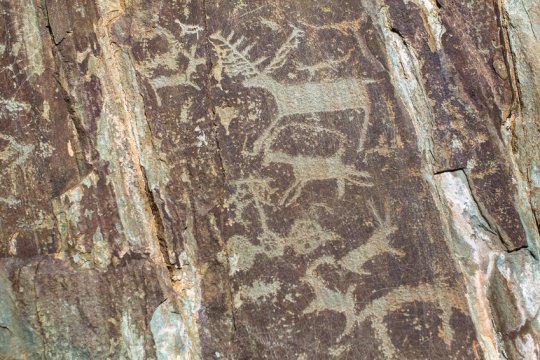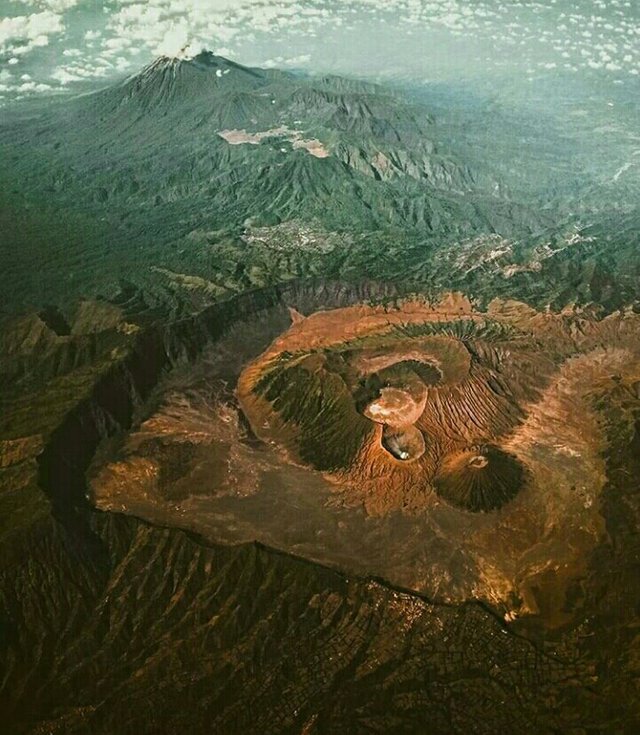Did humans speak through cave art? Ancient drawings and language's origins

This is wonderful Ancient art in the Altai Mountains, Russia. While the world’s best-known cave art exists in France and Spain, examples of it abound throughout the world.
Credit: © De Visu / Fotolia
some specific features of cave art may provide clues about how our symbolic, multifaceted language capabilities evolved, according to a new paper co-authored by MIT linguist Shigeru Miyagawa.
A key to this idea is that cave art is often located in acoustic "hot spots," where sound echoes strongly, as some scholars have observed. Those drawings are located in deeper, harder-to-access parts of caves, indicating that acoustics was a principal reason for the placement of drawings within caves. The drawings, in turn, may represent the sounds that early humans generated in those spots.
In the new paper, this convergence of sound and drawing is what the authors call a "cross-modality information transfer," a convergence of auditory information and visual art that, the authors write, "allowed early humans to enhance their ability to convey symbolic thinking." The combination of sounds and images is one of the things that characterizes human language today, along with its symbolic aspect and its ability to generate infinite new sentences.
"Cave art was part of the package deal in terms of how homo sapiens came to have this very high-level cognitive processing," says Miyagawa, a professor of linguistics and the Kochi-Manjiro Professor of Japanese Language and Culture at MIT. "You have this very concrete cognitive process that converts an acoustic signal into some mental representation and externalizes it as a visual."
Cave artists were thus not just early-day Monets, drawing impressions of the outdoors at their leisure. Rather, they may have been engaged in a process of communication.

**Re-enactments and rituals?
The advent of language in human history is unclear. Our species is estimated to be about 200,000 years old. Human language is often considered to be at least 100,000 years old.
"It's very difficult to try to understand how human language itself appeared in evolution," Miyagawa says, noting that "we don't know 99.9999 percent of what was going on back then." However, he adds, "There's this idea that language doesn't fossilize, and it's true, but maybe in these artifacts [cave drawings], we can see some of the beginnings of homo sapiens as symbolic beings."
While the world's best-known cave art exists in France and Spain, examples of it exist throughout the world. One form of cave art suggestive of symbolic thinking -- geometric engravings on pieces of ochre, from the Blombos Cave in southern Africa -- has been estimated to be at least 70,000 years old. Such symbolic art indicates a cognitive capacity that humans took with them to the rest of the world.
"Cave art is everywhere," Miyagawa says. "Every major continent inhabited by homo sapiens has cave art. ... You find it in Europe, in the Middle East, in Asia, everywhere, just like human language." In recent years, for instance, scholars have catalogued Indonesian cave art they believe to be roughly 40,000 years old, older than the best-known examples of European cave art.**
Hello, you received an upvote from @steemdunk thanks to @oliviaalexa! Steem Dunk is an automated curation platform that is easy to use and built for the community. Join us at https://steemdunk.xyz